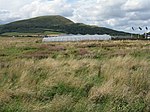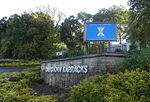Swanston, Edinburgh

Swanston is a village and residential area on the southern edge of Edinburgh, Scotland, noted for its picturesque thatched cottages set around an informal village green. Because of its relatively isolated position at the foot of the Pentland Hills, it has remained largely unaffected by commercial or suburban development. The village grew up in the 18th century, originally to provide accommodation for farm workers on Swanston Farm. The farm, in turn, can trace its origins back at least to the 13th century and possibly earlier. The area has also played a role in supplying Edinburgh with fresh water. Its most notable resident was the young Robert Louis Stevenson, whose family leased a holiday home in the village during the late 19th century.
Excerpt from the Wikipedia article Swanston, Edinburgh (License: CC BY-SA 3.0, Authors, Images).Swanston, Edinburgh
Moossteiggeräumt, München Aubing (Aubing-Lochhausen-Langwied)
Geographical coordinates (GPS) Address Nearby Places Show on map
Geographical coordinates (GPS)
| Latitude | Longitude |
|---|---|
| N 55.892316 ° | E -3.2165936 ° |
Address
Moossteiggeräumt
Moossteiggeräumt
81249 München, Aubing (Aubing-Lochhausen-Langwied)
Bayern, Deutschland
Open on Google Maps







